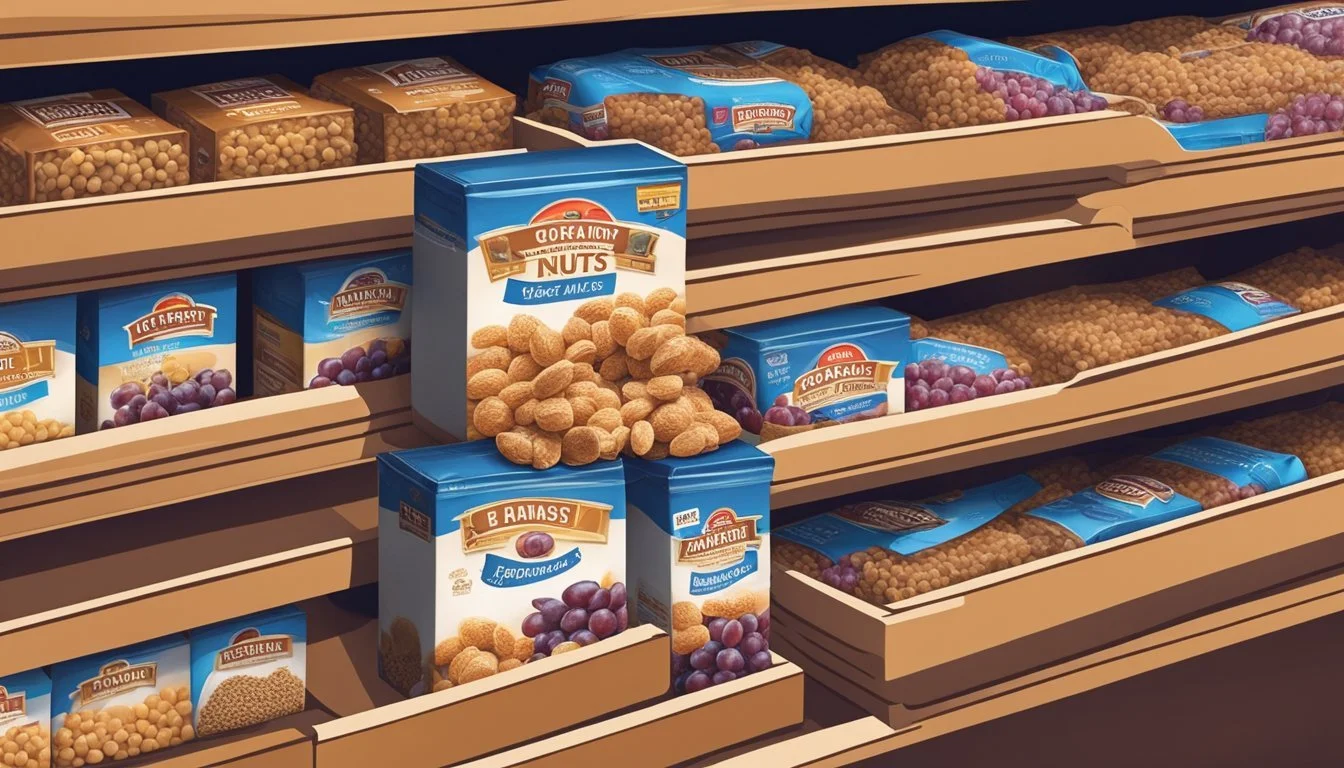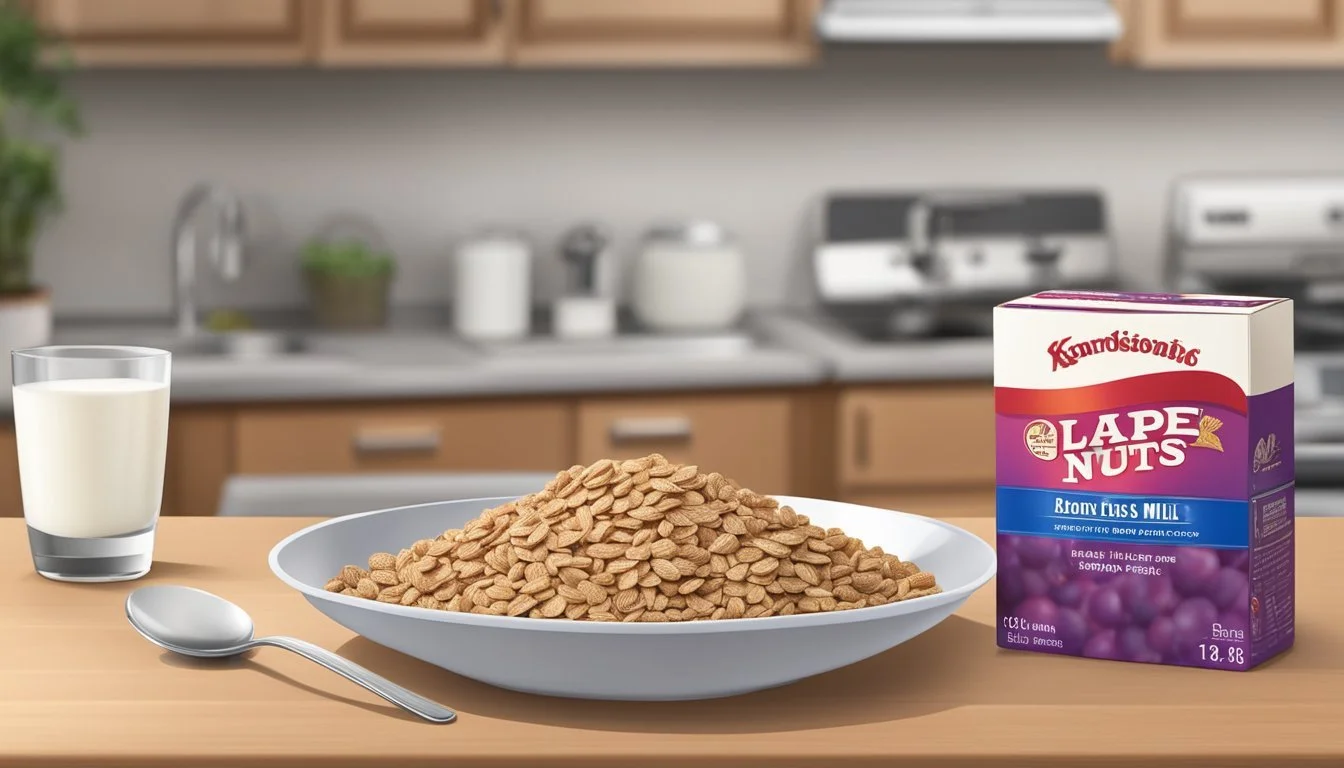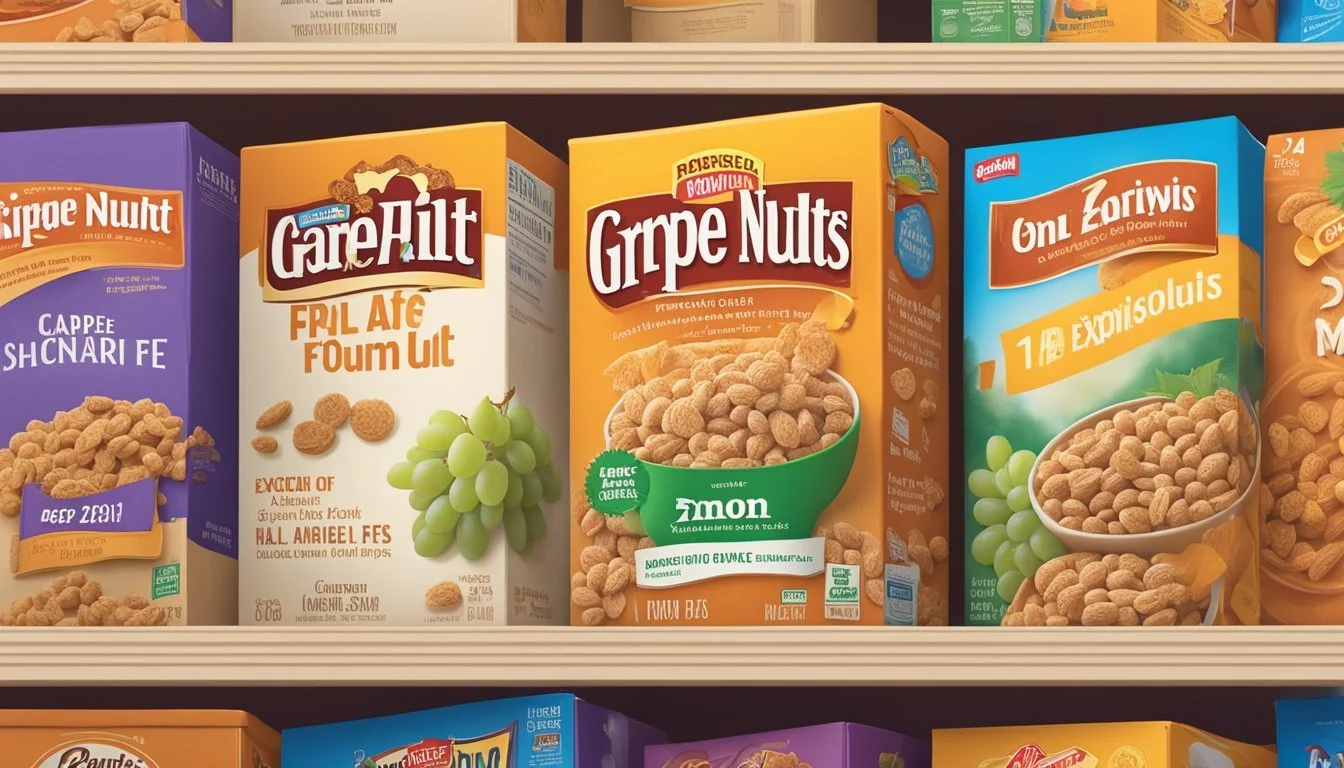How Long Do Grape-Nuts Last?
Understanding Their Shelf Life
Grape-Nuts the distinctly crunchy breakfast cereal, has been a staple in American households since its introduction in 1897 by C.W. Post. As a product of Post Consumer Brands, Grape-Nuts has built a reputation for being a nutritious and hearty option in the cereal aisle. Made from wheat and barley, this cereal is known for its dense and granular texture, which contributes to its notable shelf stability.
When it comes to shelf life, Grape-Nuts is among the longer-lasting cereals due to its low moisture content and simple ingredient list. This feature is key for consumers who value both longevity and nutritional quality in their breakfast choices. As a dense source of fiber and plant-based protein, Grape-Nuts (What wine goes well with nuts?) caters to those seeking a wholesome start to their day without the frequent need for restocking.
While managing diet and household supplies, consumers often consider the longevity of the foods they purchase. The durability of Grape-Nuts aligns with this practical approach to grocery shopping, ensuring that a box opened today retains its quality for an extended period. This benefit is further complemented by its potential nutritional contributions to a balanced diet, lending consumers both convenience and healthfulness in their breakfast routine.
History and Brand Legacy
Grape-Nuts has endured as a staple in American breakfast culture, maintaining its original recipe and taste for over a century. Its history intertwines with significant figures and events, marking its legacy in both the cereal industry and cultural zeitgeist.
Origins of Grape-Nuts
Initially developed in 1897 by C. W. Post, Grape-Nuts cereal emerged from the health and wellness movement prevalent in Battle Creek, Michigan. Post, who was once a patient at the Battle Creek Sanitarium, was influenced by the health-focused principles of Dr. John Harvey Kellogg. The cereal was a byproduct of the era's experimentation with diet and health, and its name, while misleading, was a marketing strategy to invoke healthy and natural connotations. Despite containing neither grapes nor nuts, Grape-Nuts is made from wheat and barley flour.
Post Consumer Brands Evolution
The Postum Cereal Company, founded by C. W. Post and later renamed Post Consumer Brands, has been the guardian of Grape-Nuts throughout its history. The company has navigated the product through the economic downturns of the Great Depression, World War II rationing, and the manufacturing challenges during the Covid-19 pandemic. Despite these challenges, Post has maintained the cereal's original formula, attesting to its time-tested appeal.
Cultural Impact
Grape-Nuts has made its mark on popular culture, particularly in the 1970s with advertisements featuring wild-food expert Euell Gibbons and the memorable line, "Ever eat a pine tree?" The brand was also involved in historical feats, such as sponsoring Sir Edmund Hillary's expedition to Mount Everest, symbolizing both health and adventure. Over the years, Grape-Nuts has remained a constant presence on grocery shelves, in part due to promotional strategies involving coupons and endorsements that resonate with consumers' evolving preferences.
Grape-Nuts Composition
Grape-Nuts cereal distinguishes itself with a unique composition that offers notable nutritional value. It is made without grapes or nuts, despite what its name suggests.
Key Ingredients
Whole Wheat: Serves as the primary ingredient, providing a robust foundation of complex carbohydrates.
Malted Barley: A crucial component that lends a distinct flavor and aids in the breakdown of starches to simpler sugars like glucose.
Salt: Used in moderation to enhance the natural flavors of the other ingredients.
Dried Yeast: Aids in the cereal's development, contributing to its nutritional profile.
Nutritional Profile
Fiber Content: Each serving of Grape-Nuts contains 7 grams of fiber, bolstering its reputation as an excellent source of whole grains.
Protein: Contributing to its nutrient density, Grape-Nuts provide a good amount of protein per serving.
Natural Ingredients: The cereal prides itself on a simple, natural composition devoid of artificial additives.
Health Claims
Nutrition: Grape-Nuts is often marketed as a nutritious breakfast option due to its high fiber and protein contents, which are emphasized for a healthy diet.
Whole Grains: The use of whole wheat and malted barley helps maintain an element of natural nutrition that aligns with some consumers' health expectations.
Each component of Grape-Nuts plays a role in creating its distinctive taste and nutritional benefits, aligning with the preferences of health-conscious consumers.
Shelf Life and Storage
Grape-Nuts cereal offers a robust shelf life when stored correctly, ensuring that it remains fresh for extended periods.
Preservation Methods
One can prolong the shelf life of Grape-Nuts by keeping the cereal in an airtight container to prevent exposure to air and moisture. Storing Grape-Nuts in a cool, dry place shields it from humidity, which is known to adversely affect freshness.
Airtight Storage: Preserve in sealed containers
Cool Environment: Storage away from heat sources
Factors Affecting Freshness
Several factors dictate the longevity of Grape-Nuts' freshness. The cereal must be shielded from strong odors, as its porous nature can lead to unwanted taste alterations if stored near potent-smelling substances. Keeping Grape-Nuts in the refrigerator may extend shelf life further, though this is typically not necessary unless the ambient temperature is unusually high.
Odors: Store away from strong-smelling foods
Moisture Control: A dry environment is essential
Consumption Trends
Grape-Nuts have witnessed varying consumption trends influenced by their nutritional profile and versatility. They cater to different eating habits, from being a staple in breakfast routines to a quick snack option.
Dietary Integration
Grape-Nuts are often considered a healthy addition to one's diet, largely because of their high fiber content and presence of heart-healthy nutrients. The consumption of Grape-Nuts as part of a regular diet is sometimes associated with a reduced risk of heart disease. Dietary integration of Grape-Nuts into meals aims at taking advantage of these benefits. They are typically consumed at breakfast, serving as a filling and energizing start to the day.
Breakfast: Regularly featured in a morning meal
Heart Health: Fits into a heart-conscious diet plan
Fiber: High in dietary fiber
Snacking Vs. Regular Meals
The adaptation of Grape-Nuts into snacking habits showcases their role as a healthy snack option. Consumers often choose Grape-Nuts as a satiating snack between meals because of the dense nutritional content. The trend indicates a preference for snacking on foods that provide sustained energy rather than empty calories.
Snacking:
As a standalone snack
Mixed with yogurt or fruits
Regular Meals:
As a crunchy topping on salads
Included in baked goods for added texture
The consumption patterns reflect a blend of traditional use in regular, heart-friendly meals and modern snacking habits, which leverage the health benefits of raw nuts and other superfoods.
Product Varieties and Comparisons
In considering the longevity of Grape-Nuts, it's useful to explore the various product iterations of the brand as well as how they stack up against other cereals in the market.
Grape-Nuts Variants
Original Grape-Nuts: The classic version, consisting of hearty wheat and barley, boasts a notable shelf life typically extending several months past its printed best-by date when stored properly.
Grape-Nuts Flakes: A flakier version, reminiscent in texture to other popular flaked cereals, may have a slightly shorter shelf life than the original due to its different composition but still maintains good longevity.
Competing Cereals
Honey Bunches of Oats: (how long do honey bunches of oats last?) Characterized by a mix of flakes and clusters, it generally has a comparable shelf life to flaked cereals but should be consumed closer to the best-by date for optimal freshness.
Fruity Pebbles: (how long do fruity pebbles last?) With its vibrant colors and sugary coating, Fruity Pebbles can last quite a while, although perhaps not as long as less processed cereals like shredded wheat (how long does shredded wheat last?).
Cornflakes: As a staple ready-to-eat cereal, cornflakes have a similar shelf life to Grape-Nuts, being made from a simple base grain without added fats which can spoil.
Shredded Wheat: This simple, whole-grain cereal rivals the shelf life of Grape-Nuts due to its minimal ingredients and lack of perishable additives.
When assessing the longevity and resilience of Grape-Nuts as compared to other cereals on the market, its minimal ingredient list and robust texture set it apart, often allowing it to outlast more processed and sugary varieties.
Impact on Health
In discussing the health impact of Grape-Nuts, one must consider their high fiber content, alongside assessing the myriad of health claims related to their consumption, such as effects on heart disease and obesity.
Fiber Content
Grape-Nuts are known for their high fiber content, which contributes to various health benefits. A diet rich in fiber can normalize bowel movements and lower cholesterol levels. Specifically, fiber helps to control blood sugar, which may reduce the risk of developing type 2 diabetes. Additionally, sufficient dietary fiber aids in maintaining a healthy weight.
Risks and Benefits
While the benefits of high fiber in Grape-Nuts are evident, consumers should be aware of the potential risks and benefits associated with its consumption. It is often considered a health food due to its nutritional profile, which includes health claims such as lowering the risk of heart disease. However, excessive intake without adequate hydration may lead to complications like appendicitis. It's imperative to consume them in moderation and within a balanced diet to reap the health benefits while minimizing risks.
Consumer Insights
In assessing the state of Grape-Nuts on the market, it is vital to examine the product's marketing approaches and its engagement with consumers on social media platforms.
Marketing Strategies
Grape-Nuts employs several marketing strategies to maintain its household penetration and consumer base. During the pandemic-era supply chain snags that resulted in a notable product shortage, Grape-Nuts utilized this as an opportunity to reinforce brand loyalty. They executed a reimbursement campaign for those who purchased the cereal at inflated prices due to the scarcity, with the promise to refund up to $115. This move assured customers of the brand's commitment to affordability and accessibility.
Social Media Presence
Grape-Nuts maintains a consistent presence on social media, which is instrumental in amplifying their marketing and advertising efforts. They leverage social media platforms to communicate directly with their audience, sharing nutritional information and responding to consumer feedback. Notably, after overcoming the supply challenge, the brand used social media to announce the return of Grape-Nuts to shelves nationwide, furthering their national ad campaigns. The brand's engagement through these channels has helped sustain consumer interest and trust, especially in times when direct communication is highly valued.
Grape-Nuts in Culinary Uses
Grape-Nuts cereal, with its distinctive taste and extreme crunch, has crossed the boundaries of a simple breakfast offering. Its versatility aids its integration into various recipes, enhancing texture and flavor.
Creative Serving Suggestions
Grape-Nuts can transform the texture of numerous dishes. When sprinkled over ice cream, it provides a satisfying crunch that contrasts with the creamy dessert. They also serve as a hearty addition to granola mixes, amplifying the nutritional profile and taste.
In Ice Cream: A tablespoon of Grape-Nuts sprinkled on top enhances texture.
As Granola: Mix with oats, nuts, and honey, then bake for a homemade twist.
Utilizing Grape-Nuts in these ways allows for the preservation of the cereal's consistency and environmental impact through minimal processing.
Pairings and Recipes
Grape-Nuts can be the star ingredient in various recipes due to its unique consistency and taste. The cereal's robust structure holds up well when baked, making it an excellent addition to muffins and bread, while its subtle sweetness complements savory dishes.
Muffins: Fold Grape-Nuts into the batter for a fiber-rich breakfast option.
Bread: Incorporate into the dough for a textured, wholesome loaf.
These applications highlight the cereal's adaptability in culinary practices, turning it into a kitchen staple for both sweet and savory creations.










